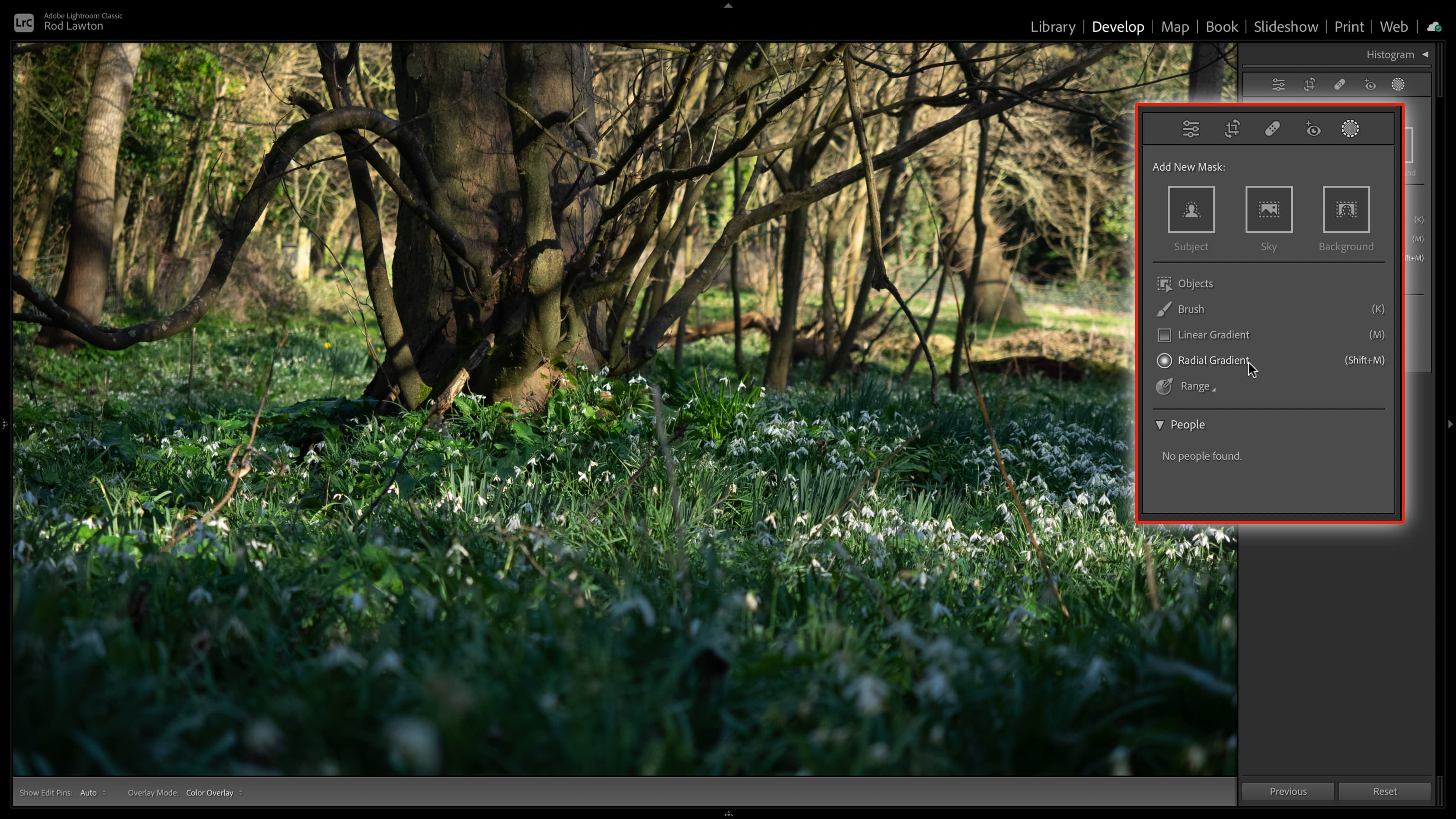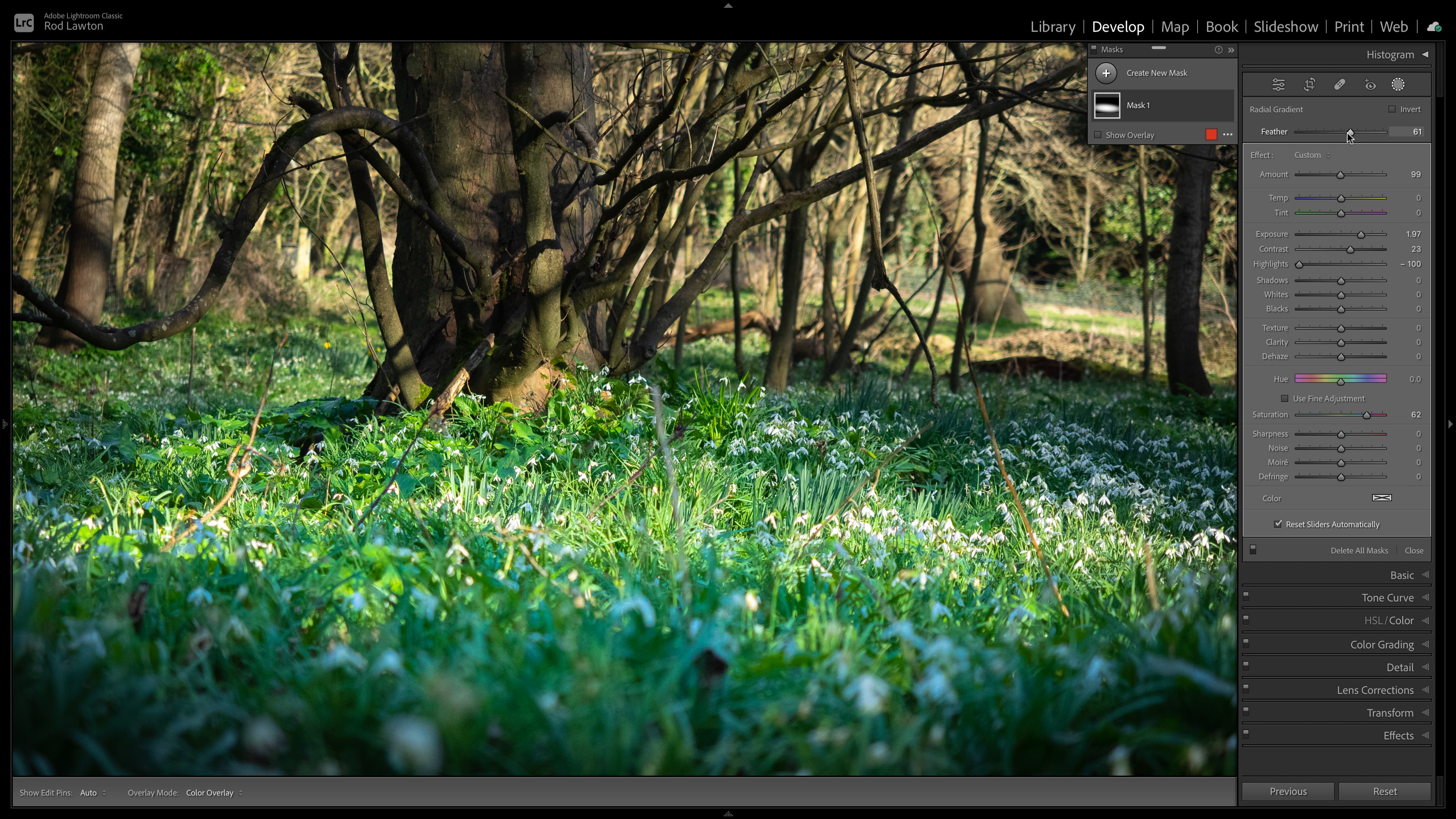Lightroom hack #08: Radial gradient relighting
You don’t need clever AI masking for this technique, which can give a lift to almost any image

Adobe’s latest AI masking tools are great, but you don’t need them for this very simple relighting technique. It’s the opposite of AI. It's a very basic, even crude masking technique that relies on subtlety and judgement, and the only deep learning you need is your own.
We are publishing one hack a day this Christmas holiday period, see our other Lightroom Hacks
This relighting technique is effective on so many different images of so many different kinds that it can quickly become addictive. You can use it to add some light and shade and contrast to images that don’t have any, and to emphasis end enhance any lighting already present.
I took this shot in a wood near where I live in early Spring, when for a few precious days the wild snowdrops were in bloom. The trees were bare, allowing the low sun through in patterns of light and shade.

The trouble is, the original shot lacks any sense of lightness or color, so my plan was to add some of my own, using a radial gradient to emphasise that patch of sun in the center.
I have just a few tips for radial gradient relighting:
1. A horizontal elliptical gradient is usually the best shape for natural lighting effects – you may have to tilt it to follow the natural direction of the light.
2. The default feathering is usually a little harsh, making the edges of the gradient too obvious. You can increase the feathering with the slider in the tools panel or by dragging the outer edge of the mask.
3. You’ll almost certainly need to move the mask around and resize it to make the effect look ‘right’. Very often, the mask will not end up where you thought it would.


The adjustments I chose were to make the sunlit grass and snowdrops lighter, with a fresher green color to suit the Spring mood. For a summer meadow you could try warming the colors instead.
There’s no rocket science in this relighting technique, but who says photography and photo editing should be difficult?
Read more:
• Best photo editing software
• Lightroom review
• Lightroom Classic review
Get the Digital Camera World Newsletter
The best camera deals, reviews, product advice, and unmissable photography news, direct to your inbox!

Rod is an independent photography journalist and editor, and a long-standing Digital Camera World contributor, having previously worked as DCW's Group Reviews editor. Before that he has been technique editor on N-Photo, Head of Testing for the photography division and Camera Channel editor on TechRadar, as well as contributing to many other publications. He has been writing about photography technique, photo editing and digital cameras since they first appeared, and before that began his career writing about film photography. He has used and reviewed practically every interchangeable lens camera launched in the past 20 years, from entry-level DSLRs to medium format cameras, together with lenses, tripods, gimbals, light meters, camera bags and more. Rod has his own camera gear blog at fotovolo.com but also writes about photo-editing applications and techniques at lifeafterphotoshop.com
